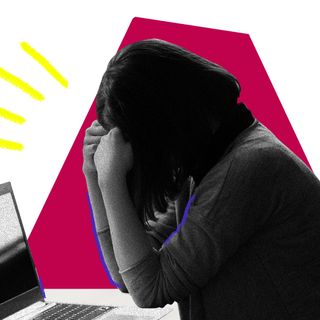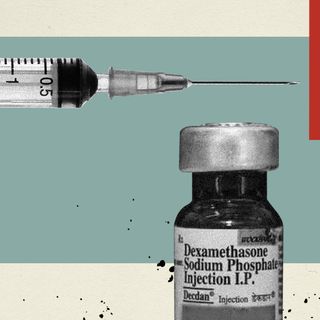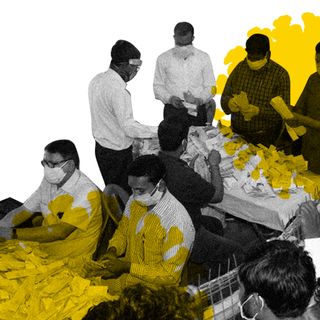
India’s Midwives Are Central to Women’s Healthcare. But the State, Societal Bias Trivialize Their Worth
“It is time our top-down and condescending approach towards dais is changed.”

When I dial Mehrunissa Bano – the dai who’d facilitated my birth more than two and a half decades ago – she instantly recognizes my voice even though it has been almost three years since I last saw her. At 94, she is just as sharp as I’d always known her to be.
Dais like Bano have effectively been left out of the primary healthcare system. No one calls them to facilitate childbirths anymore, and their children and grandchildren have understandably moved to well-paying professions. Bano’s daughter is a secondary school teacher in a local government school.
Even though since the early ’90s, projects like Matrika, Jeeva, and the Gujarat Dai Sangathan have worked tirelessly to document and disseminate traditional practices of the dais in India, their invaluable inter-generational knowledge has never been at a greater risk of being irretrievably lost. In the context of India’s overburdened healthcare system, it is critical to preserve and support these traditional forms of community care.
According to Bano, things have barely changed since 1967, when she first started practicing midwifery in western Kashmir; the state’s condescension and apathy towards dais remain the same.
“It is a matter of great sadness for me. The signs were always there, but the way we have been wiped off the map is truly saddening,” says Bano with a perceptible crack in her voice.
It was only in 2005 that the government’s National Rural Health Mission (NRHM) acknowledged how critically placed they were in acting as the first link between the state and the people. However, in order to be integrated into the healthcare system, a dai has to first become an Auxiliary Nurse Midwife (ANM). The only catch: they are required to undergo “training and skilling programs” to qualify as ANMs. These so-called skilling programs — rooted in the same colonial attitudes that viewed dais as untrained, unskilled, ignorant women with unscientific knowledge — have failed on all fronts. They lack depth, uniformity, and do not factor in the importance of the wealth of traditional information that dais were working with for centuries.
Understandably, dais like Bano would never want to become an ANM. “It’s an insult to us in every possible way. If we have been doing this for ages now, successfully at that, there must be some truth to our profession, no?” she says, exasperated.
Related on The Swaddle:
India’s Rural Women Bear the Brunt of Jobs Crisis
Further, “it is hard for traditional dais to be absorbed even in the Accredited Social Health Activist (ASHA) ecosystem. The parameters to be certified are too academic. Compulsory formal education till tenth grade, comprehension tests, age below 45 years – how do we expect our old, technically illiterate dais to pass these standards?” asks Sarthak Sharma, Tehsildar-cum-Executive Magistrate of Palampur, Kangra in Himachal Pradesh.
Despite not meeting these official parameters of being either an ANM or ASHA, dais in India have historically proven to be resourceful when it comes to safe deliveries. With their unique time-tested methods that don’t find a place in the modern “accepted” medical canon, they have saved millions of mothers and children.
In a study conducted in the early ’80s, it was found that the tradition of dais treating the placenta as part of the child’s body and disposing of it with meticulous medical hygiene is now followed by modern practitioners. In the ’60s, American anthropologist Hilen Gideon witnessed childbirth in a remote Punjab village. She wrote about how a lower-caste dai belonging to the leather-workers community handled a critical delivery by using her leather-work skills to expertly cut the cord and seal the wound with fresh cow dung.
Integrating midwives into the healthcare community in India is also crucial for ensuring that more women have access to maternal care. According to a recent study conducted by the All India Institute of Medical Sciences (AIIMS), Harvard University, and the Prime Minister’s own Economic Advisory Council, it was found that on average 63% of women do not have access to any form of formal healthcare. Our maternal mortality rate (proportion of maternal deaths per 1,00,000 births) is still quite high, according to recent government data — a number that can be vastly reduced by facilitating and encouraging community care and the passing on traditional knowledge.
“Midwives don’t just deliver babies,” notes Kate Gilmore, Deputy High Commissioner for Human Rights of the United Nations, in The Hindu. If employed properly, they prevent HIV transmission, streamline family planning, and prevent other fatal diseases. Whenever traditional midwives are integrated into the formal healthcare system with a collaborative approach, neonatal and maternal fatalities drop. In Pakistan, a similar approach to integrate traditional midwives led to a drastic reduction in perinatal and maternal deaths.
In this context, the State of the World’s Midwifery Report 2021 — funded by the United Nations Population Fund, the World Health Organization, and the International Confederation of Midwives (ICM) — highlighted the importance of investing more in our midwives. The analysis, involving 88 countries, showed that an increase in midwife-delivered interventions could avert 40% of maternal and newborn deaths and 26% of stillbirths.
Despite such wide, global evidence validating the importance of traditional midwives in lowering maternal and neonatal deaths, the union government’s Janani Suraksha Yojana, which targets safe “institutional” deliveries, does not take into account the expertise of our dais.
Especially amid the current pandemic — with healthcare not reaching the most remote parts of the country more than ever — effective integration and investment in our dais could have eased the burden on the healthcare system and spread healthcare responsibilities more evenly.
“If given the opportunity, I would visit an expecting mother to facilitate safe childbirth even if it means risking my own health by stepping out of my house,” Mehrunissa Bano tells me.
*
Related on The Swaddle:
ASHA Workers Protest In Bengaluru Due To Low Wages, PPE Shortages
Any discourse relating to dais in the country must center caste. In large swathes of central and north India, a dai is still widely referred to by casteist terms like naain, basodin, chamaarin, or mehtrin. Caste has always worked to maintain the marginalized identities of communities of people like the dais and is thus an inextricable part of the lived realities of these women.
Asha Achuthan, assistant professor of women’s studies at Tata Institute of Social Sciences, explains, “It is no coincidence that no matter where you go in India, almost every dai is from a low caste, and/or a Muslim.” She believes that any process of truly integrating them into the modern systems of healthcare must begin by acknowledging these realities.
“The problem is not with the so-called harms of traditional knowledge. But it is with who possesses it,” Achuthan says. “Ayurveda is widely accepted and monetized worldwide because it is now mostly the domain of upper-caste men. But a dai will always be a woman from a low caste.”
Not integrating dais is thus a reflection of a deeper systemic rot.
According to the International Confederation of Midwives, any effective integration of traditional midwives into a country’s healthcare system must first begin by dedicating Chief Midwife positions in the country’s Ministry of Health and Family Welfare. For India, a step in this direction can begin once the stringent parameters that dais have to pass to become ANMs or ASHAs are eased.
Naturally, any substantial policy intervention in this direction would also require a major attitudinal change from the state. Considering dais as equal stakeholders in any decision regarding their welfare is the need of the hour — a sentiment also echoed in the International Nursing Convention of 1977 under the International Labor Organization. The Convention stresses the need to have nurses and other medical personnel – including midwives – as invaluable stakeholders while forming policies for them.
Asha Achuthan sums it up well: “it is time our top-down and condescending approach towards dais be changed for any meaningful change to happen on the ground.”
Arman Khan is a freelance writer and journalist based in Mumbai. He writes on the intersection of gender, lifestyle, and art.
Related


Using Steroids for Mild Covid19 Cases Can Worsen Infection, Cause Complications: Experts
